 "ttyymmnn" (ttyymmnn)
"ttyymmnn" (ttyymmnn)
10/09/2015 at 13:05 • Filed to: planelopnik, planelopnik history
 8
8
 14
14
 "ttyymmnn" (ttyymmnn)
"ttyymmnn" (ttyymmnn)
10/09/2015 at 13:05 • Filed to: planelopnik, planelopnik history |  8 8
|  14 14 |
Welcome to This Date in Aviation History , getting you caught up on milestones and important historical events in aviation from October 7 through October 9.
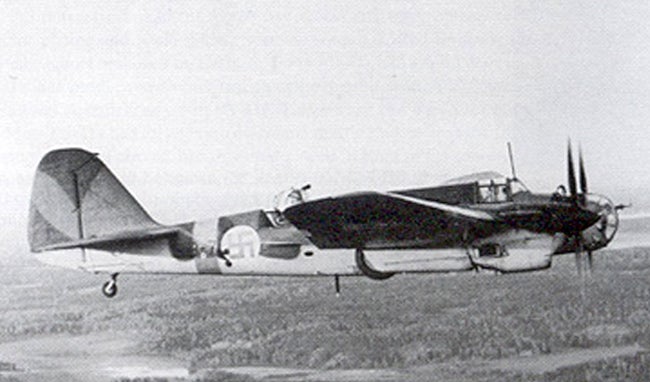
October 7, 1934 – The first flight of the Tupolev ANT-40RT, the prototype of the Tupolev SB.
The decade of the 1930s was an era of rapid development in aircraft technology. Designers had moved away from fabric-covered wooden frameworks to
!!!error: Indecipherable SUB-paragraph formatting!!!
aircraft, an arrangement where the metal skin of the aircraft plays a part in keeping the aircraft rigid. In 1933, the Soviet Air Force ministry issued a requirement for a new high speed bomber designated
Skorostnoi Bombardirovschik
(SB) and work on the new aircraft began at the Tupolev design bureau at the Central Aerodynamic Institute (
!!!error: Indecipherable SUB-paragraph formatting!!!
). The prototype, known as the ANT-40, was the first modern stressed skin aircraft that the Russians produced in large numbers. Tupolev created two versions, the first powered by two Wright Cyclone engines (known as the ANT-40RT, which flew first) and the second powered by two Spanish-made Hispano Suiza liquid cooled V-12 engines (known as the ANT-40IS). The second version would serve as the production prototype, but not before some significant bugs were worked out. Many pilots and maintenance personnel were upset with the early problems, and when the Russian Commissar for Heavy Industry, Sergo Ordzhonikidze, came for an inspection, the crews covered their aircraft with placards complaining about the shortcomings. Tupolev (who was arrested in 1937 on trumped up charges of treason) was summoned for an audience with Stalin, where he told the Russian leader that most of the defects were trivial. Stalin replied, “There are no trivialities in aviation; everything is serious and any uncorrected triviality could lead to the loss of an aircraft and its crew.” Despite the defects, production was ordered before the testing phase had completed, and the SB first saw action with the Spanish Republicans during the Spanish Civil War in 1936. There, the SB proved to be faster than many contemporary fighters, and significantly faster than the older biplane fighters it faced. The SB also saw service in China, Mongolia, Finland, and some captured aircraft were flown by the Germans. Despite its speed, the SB was obsolete by 1941, and the remaining aircraft were used as transports and cargo aircraft. In all, 6,656 SBs were produced between 1936 and 1951, making it one of the most numerous aircraft of its day.
(Photo: Tupolev SB in Finnish markings, author unknown)
!!! UNKNOWN CONTENT TYPE !!!
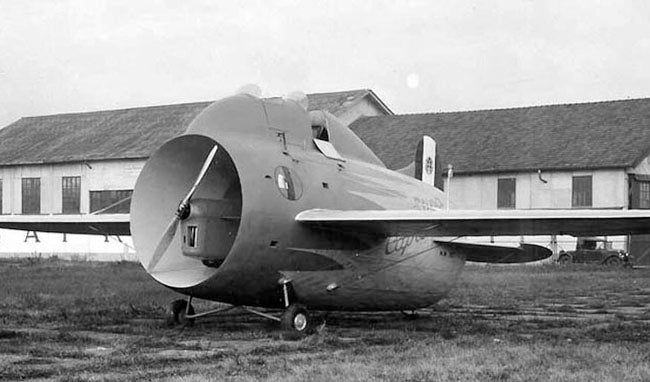
October 7, 1932 – The first flight of the Stipa-Caproni.
The decades of the 1920s-1930s are referred to as the
!!!error: Indecipherable SUB-paragraph formatting!!!
, a time when aviation became fixed in the public imagination, and the speed of technological advance became quite rapid. But it was also a time of great experimentation, when aircraft developers tested new methods of design and construction that were often quite outlandish, though some would eventually come to influence future designs. One of the more exotic ideas to come out of this period was the Stipa-Caproni, also known by the reverse name Caproni Stipa, an aircraft in which the propeller was completely housed within a barrel-shaped fuselage. Created by Italian engineer
!!!error: Indecipherable SUB-paragraph formatting!!!
and built by manufacturer
!!!error: Indecipherable SUB-paragraph formatting!!!
, the aircraft had a tapered, airfoil-shaped fuselage surrounding the propeller, creating a
!!!error: Indecipherable SUB-paragraph formatting!!!
that compressed the air moved by the propeller and sped it up, putting into practice principles of fluid dynamics described by
!!!error: Indecipherable SUB-paragraph formatting!!!
in 1738. Stipa called his invention an
intubed propeller
, and he calculated the shape of both the tube and the propeller for optimal efficiency. In 1932, he convinced the Italian government to build his unorthodox airplane. Constructed mostly of wood, the aircraft’s elliptical wing passed through the oversized fuselage behind the propeller, and the rudder and elevators were mounted directly behind the tubular fuselage to benefit from the passage of air over them. Two pilots sat in tandem atop the aircraft. Test pilots found that the aircraft was extremely stable, almost to the point of being difficult to turn, and the fact that the entire aircraft helped create lift meant that extremely slow landing speeds were possible. Despite the promising test results, the Stipa-Caproni didn’t perform better than contemporary aircraft, and the project was canceled. However, Stipa’s work was influential and widely studied, and some consider his intubed propeller, essentially a ducted fan, as the precursor to the modern turbofan engine.
!!! UNKNOWN CONTENT TYPE !!!
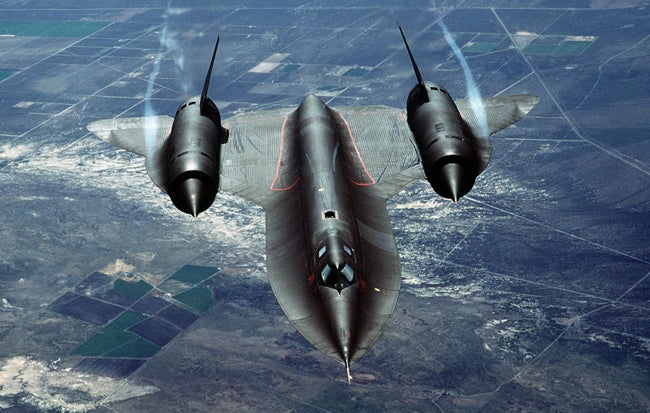
October 9, 1999 – The final flight of the Lockheed SR-71 Blackbird.
In 1957, Lockheed started investigating an aircraft that could take over the job of spying on the Soviet Union from the vulnerable
!!!error: Indecipherable SUB-paragraph formatting!!!
. This task became more urgent in 1960 when Francis Gary Powers was
!!!error: Indecipherable SUB-paragraph formatting!!!
by a surface-to-air missile over the Soviet Union while flying a U-2. In addition to making a plane that flew high and fast, Lockheed also experimented with technologies to reduce the aircraft’s radar signature, the precursor to what we know as
!!!error: Indecipherable SUB-paragraph formatting!!!
today. The result of those studies led to the single-seat
!!!error: Indecipherable SUB-paragraph formatting!!!
, which first flew in 1962. The A-12 was followed by the SR-71, which offered increased range and more sensors, with a second crew member to handle the reconnaissance work, and while the lighter and faster A-12 could outperform the SR-71, the Blackbird was a more capable aircraft. Powered by two Pratt & Whitney J58-1 continuous bleed afterburning turbojets, the Blackbird was capable of Mach 3.3 at 80,000 feet. It could not be shot down by the surface-to-air missiles of the day, and was faster than any contemporary Russian fighter. As a result, no SR-71 was ever lost to enemy fire. But along with the unsurpassed capabilities of the SR-71 came very high operating costs, and it became a political issue in an era of shrinking budgets and competition for funds. In 1989, the Blackbird was retired from service, even at a time of escalating tensions in the Middle East when it could have performed valuable reconnaissance in the upcoming
!!!error: Indecipherable SUB-paragraph formatting!!!
. When the US government realized that it still had a need for the high-flying spy plane, the SR-71 was updated with real-time data transmission capabilities and reactivated in 1993, in spite of stiff opposition from the USAF who said they didn’t have the funds to operate it. They also claimed that it competed with unmanned reconnaissance projects currently underway. After another political battle over funding the aircraft, the SR-71 was permanently canceled in 1998, and the last two airworthy Blackbirds were shifted to NASA for research. The book on the Blackbird was finally closed on October 9, 1999 when the last flying aircraft, an SR-71A (61-7980/NASA 844), landed at Edwards AFB in California and was placed in storage with the other NASA Blackbird. All remaining aircraft (as far we know) are now housed at aviation museums around the country.
(US Air Force photo)
!!! UNKNOWN CONTENT TYPE !!!
Short Take Off
!!! UNKNOWN CONTENT TYPE !!!
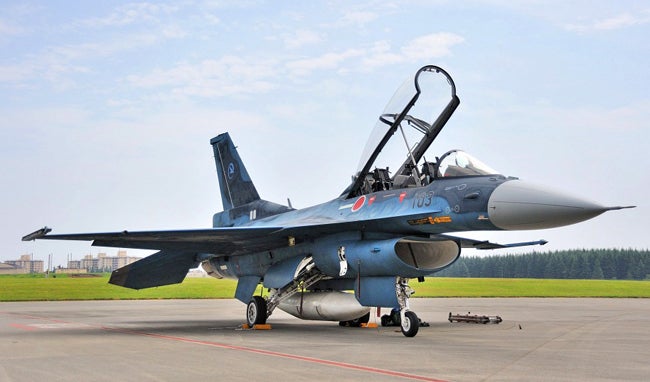
October 7, 1995 – The first flight of the Mitsubishi F-2, a fighter built in cooperation between Lockheed Martin and Mitsubishi Heavy Industries. Based on the F-16A, the F-2 features a larger wing made of composite materials, larger tail plane, larger nose for more a powerful radar, larger air intake and a three-piece canopy. As part of the partnership, advances made in the F-2 were transferred back to Lockheed for use in future US fighters. Produced from 1995-2011, ninety-four aircraft have been built and serve with the Japan Air Self-Defense Force. (Photo by nattou via !!!error: Indecipherable SUB-paragraph formatting!!! )
!!! UNKNOWN CONTENT TYPE !!!
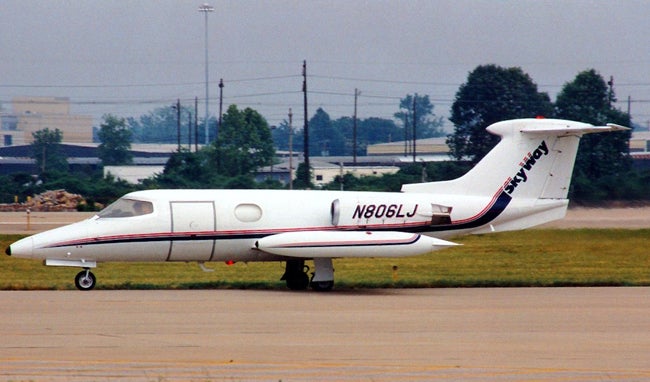
October 7, 1963 – The first flight of the Learjet 23. A true pioneer in the world of business jet aviation, the LearJet 23 originated in Switzerland where it was conceived by William P. Lear and designed by Hans-Luis Studer who had worked previously on the !!!error: Indecipherable SUB-paragraph formatting!!! fighter for Switzerland. The six-passenger bizjet became an instant success, and production was moved to the US where 105 aircraft were produced from 1962-1966. The LearJet has been continuously upgraded since, and remains in production. (Photo by JetPix via !!!error: Indecipherable SUB-paragraph formatting!!! )
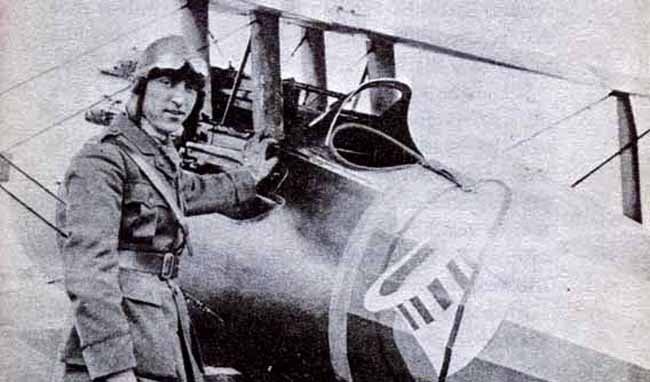
October 8, 1890 – The birth of Eddie Rickenbacker,
WWI fighter ace and recipient of seven Distinguished Service Crosses, the French Légion d’honneur and Croix de Guerre, and the Congressional Medal of Honor. America’s top ace of WWI with 26 kills to his credit, Rickenbacker tried his hand at auto design after the war and purchased and upgraded the Indianapolis Motor Speedway, operating it from 1927-1941 before selling it to the Hulman family. Rickenbacker’s most successful business venture came as head of Eastern Airlines, which he ran from 1938-1959. Rickenbacker died at age 82 in Zürich, Switzerland, and is buried at Green Lawn Cemetery in Columbus, Ohio.
!!! UNKNOWN CONTENT TYPE !!!
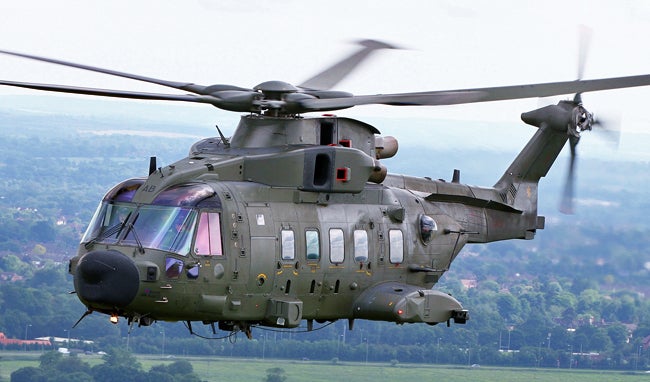
October 9, 1986 – The first flight of the AgustaWestland AW101, a joint venture of the Italian company Agusta and British company Westland to produce a medium-lift naval helicopter. Powered by three Rolls-Royce turboshaft engines, the AW101 entered service in 1999 in the transport, ASW and ship-based utility roles and now serves eleven nations with both military and civilian operators. The AW101 was considered as the new helicopter to transport the US President as the !!!error: Indecipherable SUB-paragraph formatting!!! , but that program was canceled in 2009 after significant cost overruns. (Photo by Cpl Phil Major ABIPP RAF via !!!error: Indecipherable SUB-paragraph formatting!!! )
!!! UNKNOWN CONTENT TYPE !!!
If you enjoy these Aviation History posts, please let me know in the comments. And if you missed any of the past articles, you can find them all at
!!!error: Indecipherable SUB-paragraph formatting!!!
.
!!! UNKNOWN CONTENT TYPE !!!
 The Powershift in Steve's '12 Ford Focus killed it's TCM (under warranty!)
> ttyymmnn
The Powershift in Steve's '12 Ford Focus killed it's TCM (under warranty!)
> ttyymmnn
10/09/2015 at 13:47 |
|
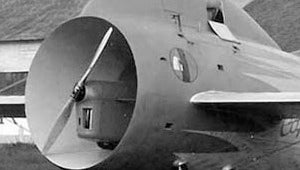
This is awesome, and I’m shocked it took this long to hear of it.
 RallyWrench
> ttyymmnn
RallyWrench
> ttyymmnn
10/09/2015 at 13:54 |
|
All remaining aircraft (
as far we know
) are now housed at aviation museums around the country.
I like this part. Good stuff as always, thanks!
 ttyymmnn
> RallyWrench
ttyymmnn
> RallyWrench
10/09/2015 at 13:59 |
|
Yeah, we can never be sure, can we? Hell, there still some F-117s flying around in the desert. Though the AF has a perfectly plausible explanation for it.
http://theaviationist.com/2014/11/11/rea…
 Viggen
> ttyymmnn
Viggen
> ttyymmnn
10/09/2015 at 14:00 |
|
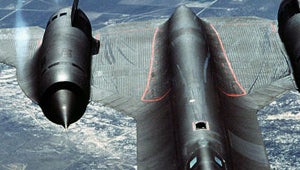
Hi fuel leak.
 ttyymmnn
> The Powershift in Steve's '12 Ford Focus killed it's TCM (under warranty!)
ttyymmnn
> The Powershift in Steve's '12 Ford Focus killed it's TCM (under warranty!)
10/09/2015 at 14:06 |
|
It is awesome, and I’m blown away that somebody came up with the idea so long ago. And if you think about it, it’s really a flying wing, since the entire structure generates lift.
 Jake Huitt - Two Alfas And A Nissan, Not A Single Running Car
> ttyymmnn
Jake Huitt - Two Alfas And A Nissan, Not A Single Running Car
> ttyymmnn
10/09/2015 at 14:26 |
|
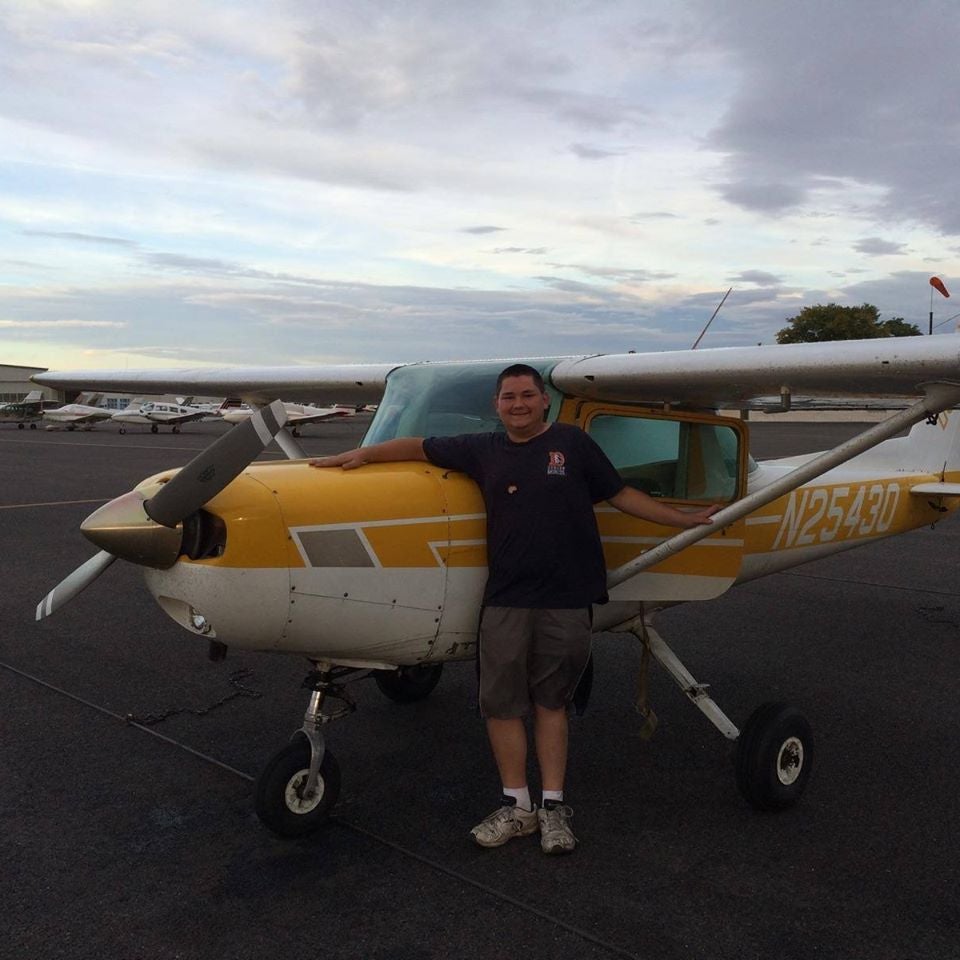
Great post, as usual.
Just want to brag but.....
I soloed last Wednesday!
Got a little scary up there. Winds 2508g12, landing 30R.
 ttyymmnn
> Jake Huitt - Two Alfas And A Nissan, Not A Single Running Car
ttyymmnn
> Jake Huitt - Two Alfas And A Nissan, Not A Single Running Car
10/09/2015 at 16:51 |
|
Thanks for reading, and yes, I remember your mentioning your solo a week or so ago. You aren’t bragging, it’s a major accomplishment and you have my congratulations.
Winds 2508g12
I know a lot about airplanes, but not as much about flying. “g12” I’m assuming means “gusting to 12 (kts?)“. Should that zero be an @? If so, I’m reading that as “Winds 25 degrees, 8 kts, gusting to 12.” A touch of crosswind?
You’re typing to me, so you obviously handled it well!
 facw
> ttyymmnn
facw
> ttyymmnn
10/09/2015 at 21:22 |
|
18 of the F-2s were at Matsushima during the 2011 Tsunami. Five were damaged beyond repair, while the 1st of the 13 the JSDF are repairing flew again for the first time this April.
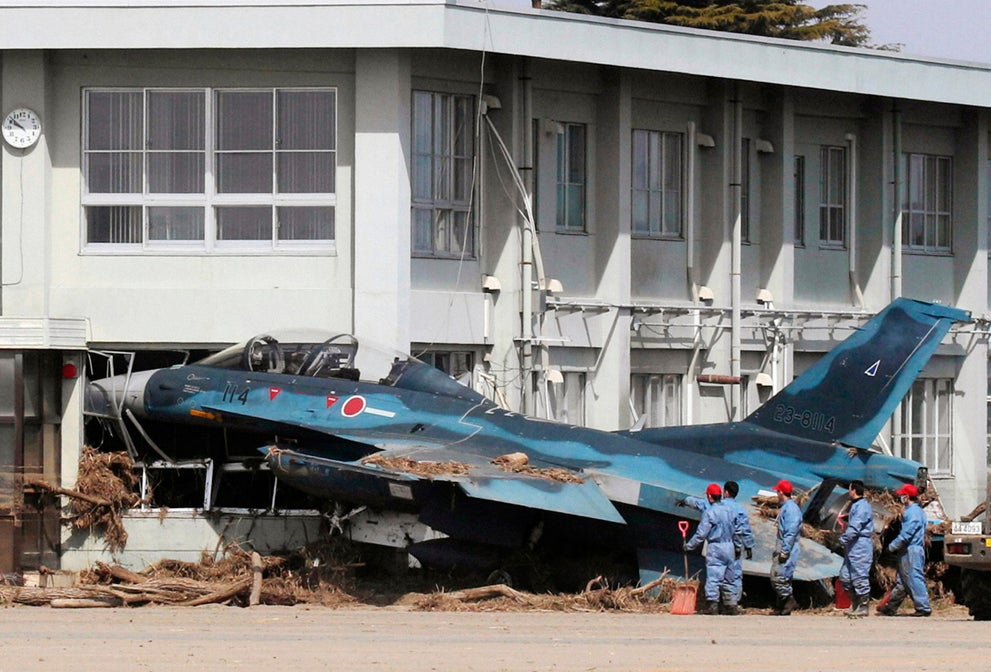
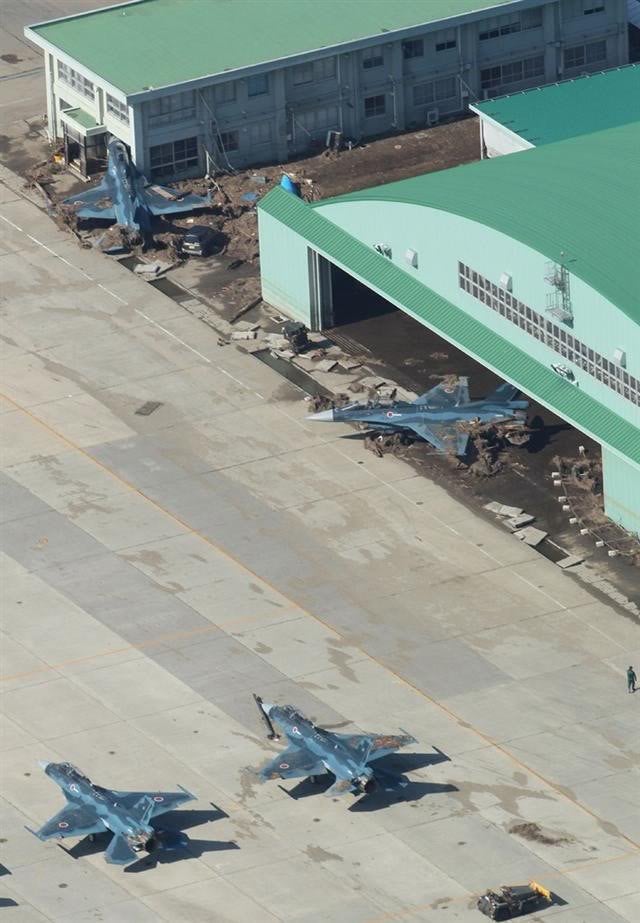
 ttyymmnn
> facw
ttyymmnn
> facw
10/09/2015 at 22:06 |
|
Wow. That wasn’t cheap.
 facw
> ttyymmnn
facw
> ttyymmnn
10/09/2015 at 22:15 |
|
Nope. This article says $1B to repair 6 (Which can’t possibly be right?, that’s F-22 levels of cost). Regardless, it has to be pretty much a complete rebuild of those fighters.
Some other aircraft were damaged as well, for example, just beyond those pictured was a Kawasaki T-4 that looks like it got knocked around pretty good as well:
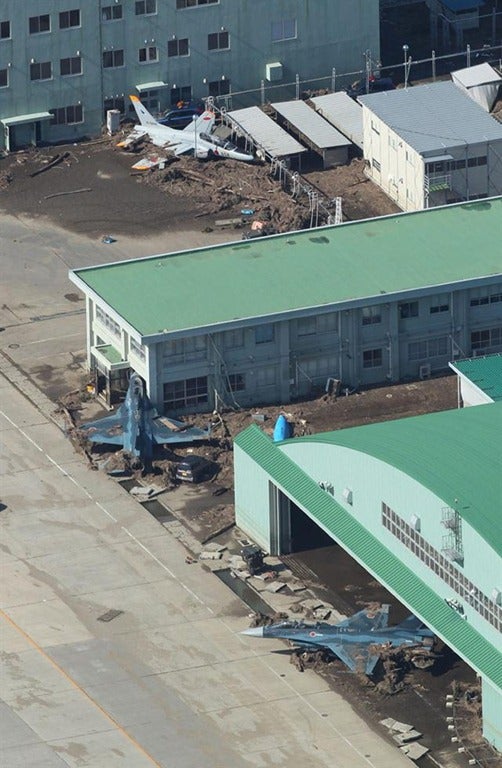
 ttyymmnn
> facw
ttyymmnn
> facw
10/09/2015 at 22:27 |
|
Wiki puts the unit cost at $127m in 2007 dollars. So $1b might be close if they were all write offs. Gotta be some parts you could salvage, though. What a mess.
 Jake Huitt - Two Alfas And A Nissan, Not A Single Running Car
> ttyymmnn
Jake Huitt - Two Alfas And A Nissan, Not A Single Running Car
> ttyymmnn
10/09/2015 at 23:21 |
|
Winds 250 degrees, 8 kias gusting to 12 kias.
I guess so.
Thanks!
 DasWauto
> ttyymmnn
DasWauto
> ttyymmnn
10/17/2015 at 17:53 |
|
Sorry to spam you with notifications. I just wanted to quickly go through and share the posts I missed while away.
I love your aviation history posts, they’re always informative and interesting and probably keep my browsing Wikipedia, going link to link on aircraft articles, somewhat at bay.
I hope that at some point Jalopnik/Flightclub reward you for efforts.
 ttyymmnn
> DasWauto
ttyymmnn
> DasWauto
10/17/2015 at 18:59 |
|
Thanks, Das, I appreciate that. And don’t worry about the notifications. I’ve had the odd article shared to Jalopnik in the past—one or two aviation history posts, an occasional one-off post. It would be nice to get some more coverage, but I’m also happy writing for a small group of followers and myself. This has become a hobby that encompasses both my interest in airplanes and my interest in history, so it’s really a labor of love and I enjoy doing it, even if my self-imposed deadlines cause a bit of angst from time to time. Thanks again for reading.